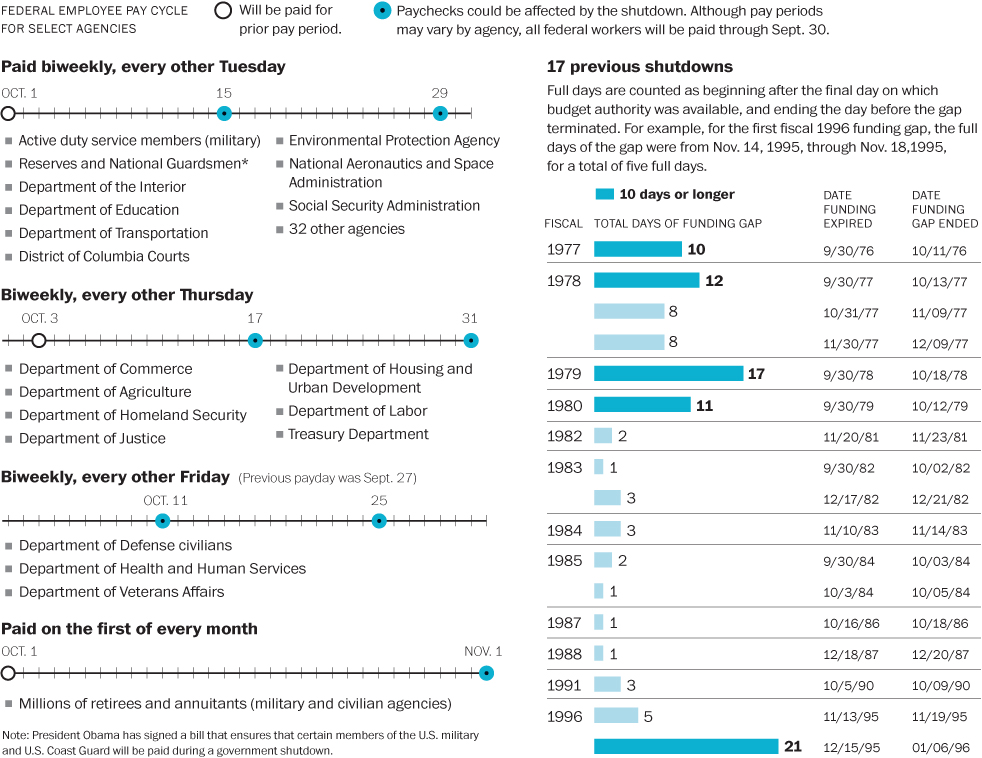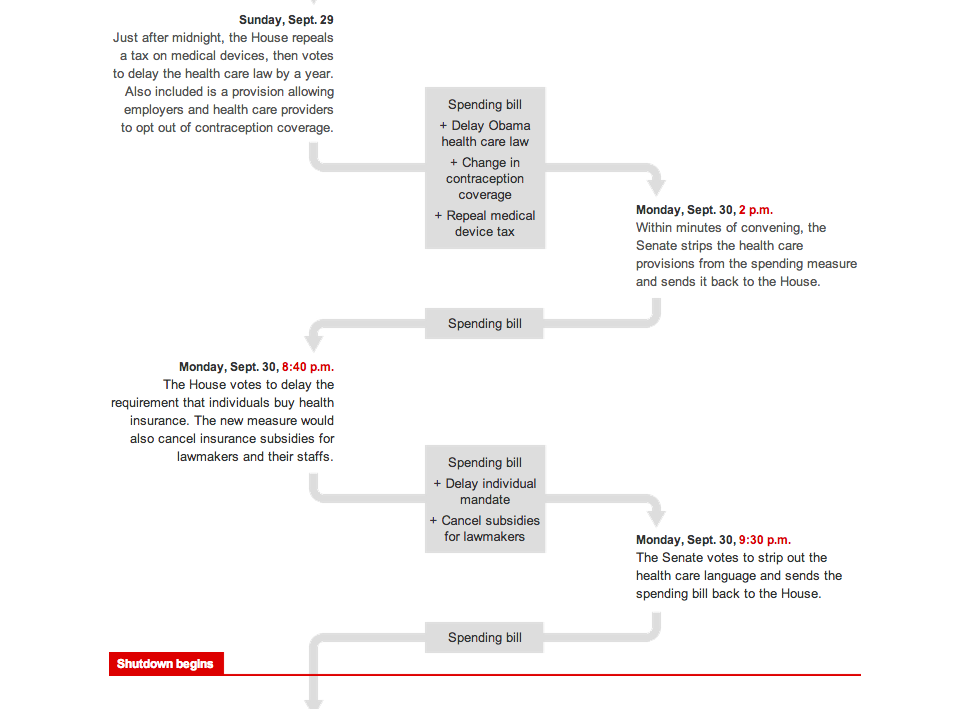Happy Friday, everyone. According to xkcd, I am failing the future test. That is to say, by 2019, I will be unable to communicate data through infographics or create data visualisations.

Credit for the piece goes to Randall Munroe.
Happy Friday, everyone. According to xkcd, I am failing the future test. That is to say, by 2019, I will be unable to communicate data through infographics or create data visualisations.

Credit for the piece goes to Randall Munroe.
Last summer, the Supreme Court ruled that most of the Affordable Care Act, also known as Obamacare, was constitutional. The one exception, however, was the plan to force states to expand their Medicaid coverage. Medicaid is the government plan tasked with helping to provide health insurance to the poor. But between the poverty level and the income level for subsidies for the new state exchanges, there is a gap. That gap was supposed to be covered by the state expansion of Medicaid.
Because the states are not being forced to expand their coverage, there now exists state-by-state gaps in health insurance coverage. This excellent interactive graphic from the New York Times looks at the poverty and insurance coverage segregated into those states that are and are not expanding their coverage. A good number of those states with high rates of poor and uninsured are Republican, deep-South states. If you’re really clever, you’ll compare this map to my map from earlier this week about the Conservative Party. Notice any overlaps?

Credit for the piece Robert Gebeloff, Haeyoun Park, Matthew Bloch, and Matthew Ericson.
If you’re not a Boston Red Sox fan, what’s wrong with you? Well, okay, so long as you’re not a Yankees fan, you’re not that bad. Anyway, the Boston Globe looked at the 2013 Red Sox season. Game by game, inning by inning. And because Boston is now advancing to the American League Championship Series, and since they will probably face Detroit, here’s a screenshot of the great game that was Scherzer vs. Lester.

Credit for the piece goes to Chiqui Esteban.
Yesterday, we looked at the new Conservative Party of America. But those are the votes that John Boehner fears to upset—and possibly fracture his party and cost him his job—if he should let a clean budget resolution come to the floor and should it pass. But why would it pass if it needs 217 votes and there are only 200 Democrats? Well, now we have a nice interactive graphic from the Washington Post that explores the moderate Republicans. Which, if this count is accurate, would provide enough votes when combined with Democrats to pass a clean budget.

Why are these Republicans in favour of a clean budget resolution? The y-axis shows that they are in moderate or mixed congressional districts, i.e. not Conservative districts. The x-axis shows that a fair number of these moderates have a high proportion of federal workers within their respective district. And who’s not working/earning money during the shutdown? Yep, a lot of federal workers.
Credit for the piece goes to Aaron Blake, Dan Keating, Ted Mellnik, and Darla Cameron.
We enter our second week of the government shutdown. Of course, blame for the shutdown falls largely upon a small number of conservative Republican members of the House, bolstered by Senator Cruz (R-TX) and his allies in the Senate. But we already know that there are a number of moderate Republicans who want to pass a clean budget resolution. So one way of looking at this new conservative faction is as a new minor party in a coalition government with Ted Cruz as Party Leader.
The idea is not mine. Ryan Lizza first wrote about the “Suicide Caucus”, a topic that Philip Bump expanded upon several days later. However, as a thought experiment, I was curious to see what would happen if this third party, a Conservative Party, would look in data visualisation terms. So here’s a quick stab at America’s newest third party.
Tom Clancy died this week. Among other novels, he authored the Hunt for Red October, Clear and Present Danger, and Patriot Games—those three were made into movies. So you may very well have heard of the man. Over at Business Insider, they mapped out the Clancy world by colouring those countries against which the United States has gone to war.

Credit for the piece goes to Walter Hickey.
The Washington Post put together this infographic looking at paydays for federal employees who will still be working during the shutdown, e.g. military service personnel. Of course, if the shutdown drags on, the paychecks for those still working would be delayed.

Credit for the piece goes to Lisa Rein and Todd Lindeman.
So the House Republicans’ Tea Party wing added several different non-budget riders centred around the Affordable Care Act (which they have labelled Obamacare) to the budget. And then the whole House Republican caucus passed it despite threats of immediate vetoes from both the Democratic Senate and the White House. The House Republicans have shut down the US government because of their refusal to remove non-budget legislation from the budget. This after the Affordable Care Act was deemed to be constitutional. After 42 separate votes on scrapping it. After the 2012 elections where the Democrats, who ran on keeping the Affordable Care Act, won more votes than Republicans, who ran on scrapping it. But, it gets even more zany than that as this fantastic infographic shows the pinball-like refusal of the Tea Party to remove the Affordable Care Act knowing well in advance that the Senate Democrats were not going to allow the rider.

Credit for the piece goes to Karen Yourish and Archie Tse.
This interactive map from the Washington Post is one part of a long-form piece that looks at NASA and the improbable tasks facing the agency. Specifically the piece looks at how NASA wants to get to Mars, but how difficult that is and how an also difficult asteroid mission is as a backup plan.

Really fantastic is about all I can say.
Credit for the piece goes to Joel Achenbach, Alberto Cuadra, Kennedy Elliott, Rebecca Rolfe, and Ricky Carioti.
While we are waiting for Russian help to destroy Syrian stockpiles of chemical weapons, we know that the Pentagon is still ready to strike (most likely with cruise missiles) various targets of the Syrian regime. This graphic from the Wall Street Journal explores some of the options. The interesting bit is the range of Syria’s anti-ship missiles. Because for those of you who do not recall the Israel–Lebanon war of 2006, Hezbollah (known to be aiding the Syrian regime) surprised some by scoring a hit on an Israeli warship with a less-advanced missile than in the Syrian arsenal.

This is only one of several different graphics from that page. Different graphics look at elements of the conflict, including the refugees, timeline of the regime’s actions, &c.
Credit for the piece goes to the Wall Street Journal graphics department.